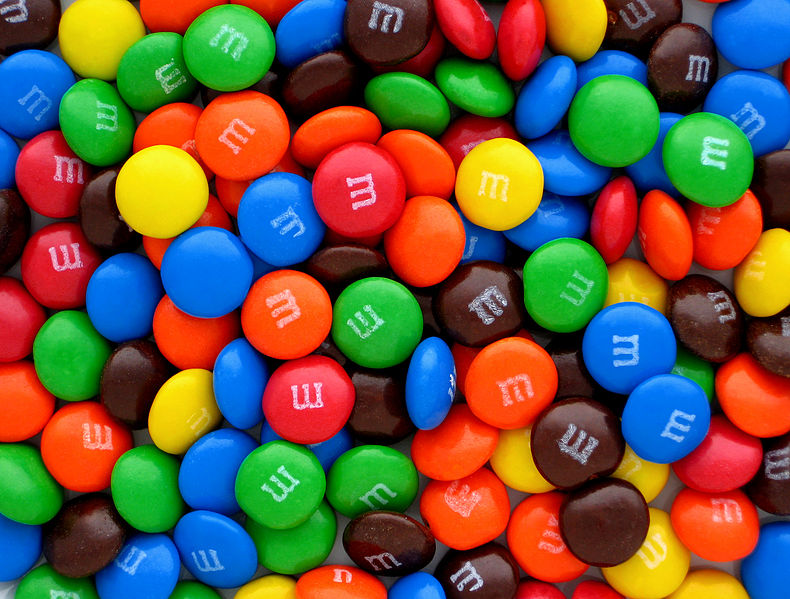We're open daily! View holiday hours
Science News
Irresistible Chocolate
November 1, 2012

By Zuberoa Marcos
With all of that Halloween candy around, admit it—you’re dying to have just one more. Do you feel guilty when you do? Well, thanks to research recently published in Current Biology, there may be no reason to feel guilty anymore.
Scientists have discovered that it’s all in our head. Thanks to a specific part of our brain called the neostriatum, plus a natural opium-like chemical produced in this same area called enkephalin, chocolate is irresistible.
Alexandra DiFeliceantonio of the University of Michigan and her team discovered that by giving rats M&M’s and stimulating the neostriatum with a big jolt of enkephalin, the little animals ate 10 candies in 20 minutes, more than twice as they would have otherwise. This is equivalent to a 150-pound human eating over six pounds of chocolate within an hour! The reaction was so intense that the rats did not stop eating until the researchers took the sweet fatty food away from them.
DiFeliceantonio’s team also found that enkephalin increases during these chocolate meals. The more a rat's enkephalin went up, the faster they were to dig in to that first M&M. It is not that enkephalins make the rats like chocolate more, the researchers say, but rather that the brain chemicals increase their desire and impulse to eat them.
The study has revealed previously unknown brain areas that play a role in overeating. Researchers expect that the findings in rats can tell us a lot about our own binge-eating tendencies. In humans, the neostriatum is split into two parts, behind the eyes and near the front of the head.
Previous studies have reported the neostriatum is active when obese people see foods and when drug addicts see drug scenes. Understanding the brain mechanisms for overconsumption could help design better biological-based treatments for obesity and binge eating disorders in humans.
Now that the researchers have traced gluttony’s path in the brain, they hope to unravel a related phenomenon: what happens in our brains when we pass by our favorite fast food restaurant and feel that sudden desire to stop.
Zuberoa Marcos is a former biologist and current science writer based in Barcelona. She writes articles regularly for Science Today.
¿Qué hace al chocolate tan irresistible?
Por Zuberoa Marcos
¿Quién no ha experimentado alguna vez, frente a una tableta de chocolate abierta, un sentimiento de culpa por la necesidad, repetida, de comer "sólo una más"? Gracias a una investigación publicada recientemente en la revista Current Biology, puede que no haya razón para volver a sentirse culpable.
Una región de nuestro cerebro llamada neostriado y la encefalina, una sustancia química similar al opio y producida en esta misma zona, serían las causas por las que el chocolate resulta irresistible.
Lo descubrieron Alexandra DiFeliceantonio y su equipo, de la Universidad de Michigan, al dar a un grupo de ratas caramelos M&M de chocolate con leche y estimular su neoestriado con una inyección de encefalina. Entonces los animales comieron 10 dulces en 20 minutos, más del doble de lo que ingerirían de forma normal. Esto es equivalente a que un humano de 68-kilos coma tres kilogramos de chocolate en una hora. La reacción en las ratas fue tan intensa que no dejaron de comer hasta que los investigadores apartaron los alimentos de su vista.
El equipo de DiFeliceantonio descubrió, además, que la cantidad de encefalina aumenta durante estas comidas a base de chocolate. Según los investigadores, no es que la encefalina provoque que a las ratas les encante el chocolate, sino que aumenta su deseo y el impulso de comer.
El estudio ha revelado áreas del cerebro que juegan un papel en la gula y que hasta ahora eran desconocidas. No es de extrañar que los resultados en las ratas puedan aportar nuevos datos acerca de nuestra tendencia a los atracones. En los seres humanos, el neoestriado se encuentra detrás de los ojos y cerca de la parte frontal de la cabeza.
Estudios previos han demostrado que el neoestriado se activa cuando las personas obesas ven alimentos y los drogadictos escenas de drogas. Entender los mecanismos cerebrales de la gula podría ayudar a diseñar mejores tratamientos para la obesidad y otros trastornos alimentaros en los seres humanos.
Una vez descubiertas las raíces neurológicas de la tentación, los investigadores esperan desentrañar ahora un fenómeno relacionado: ¿qué pasa en nuestro cerebro cuando pasamos por delante de nuestro restaurante favorito de comida rápida y sentimos el deseo repentino de parar?
Zuberoa Marcos es bióloga molecular y actualmente trabaja como productora de TV y periodista científica. Escribe de forma regular para Science Today.